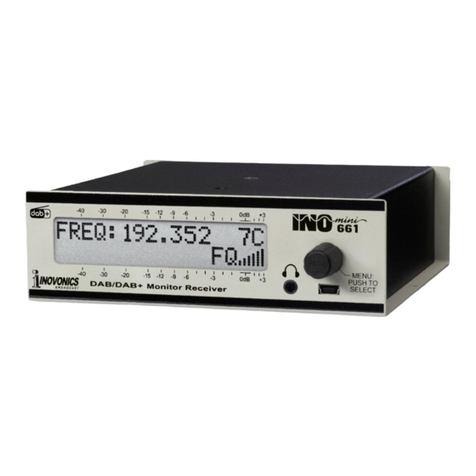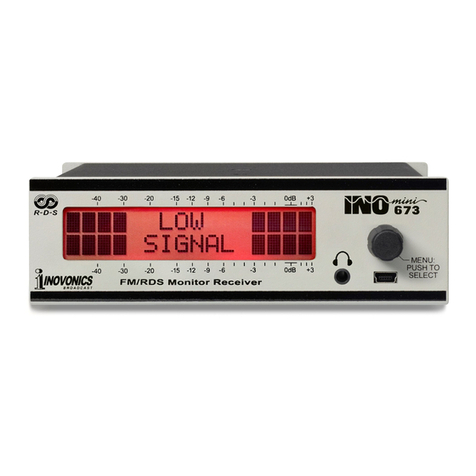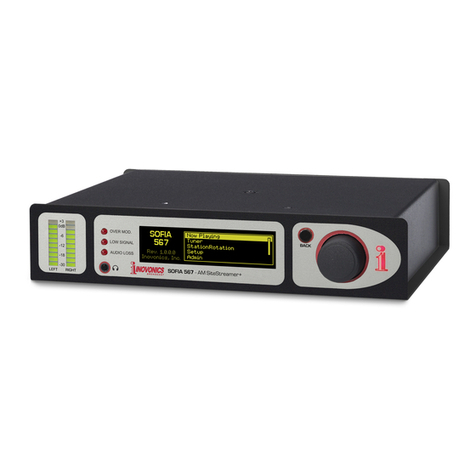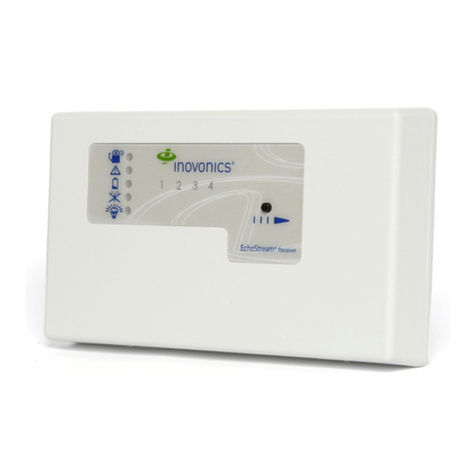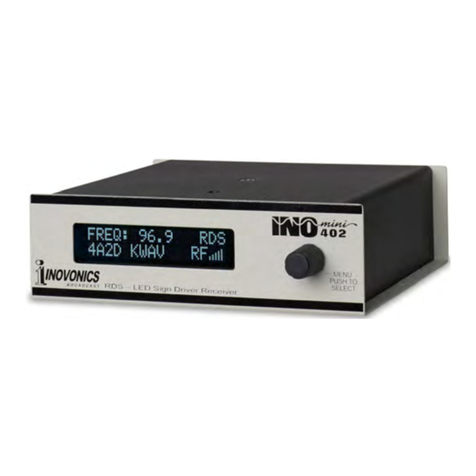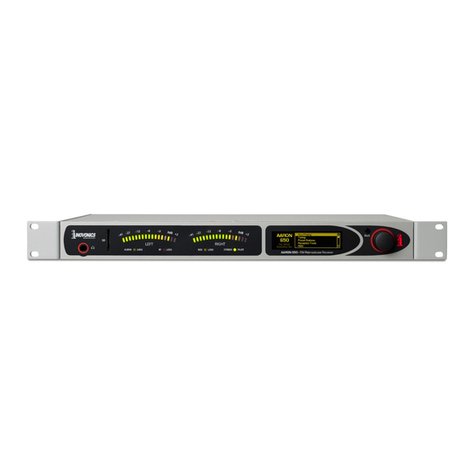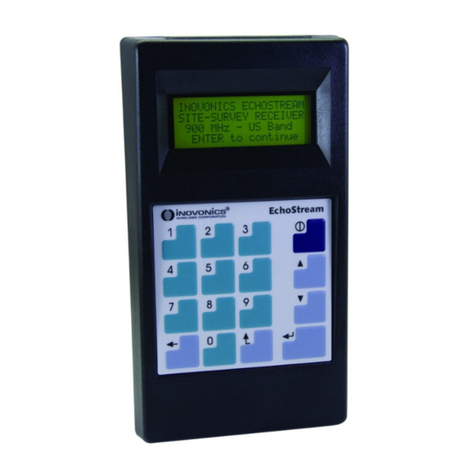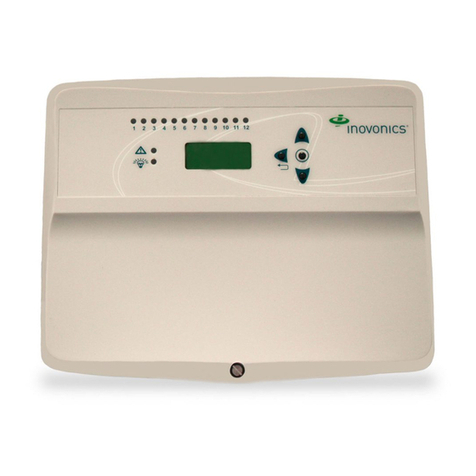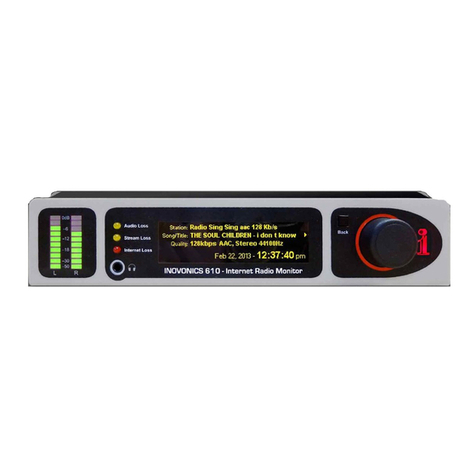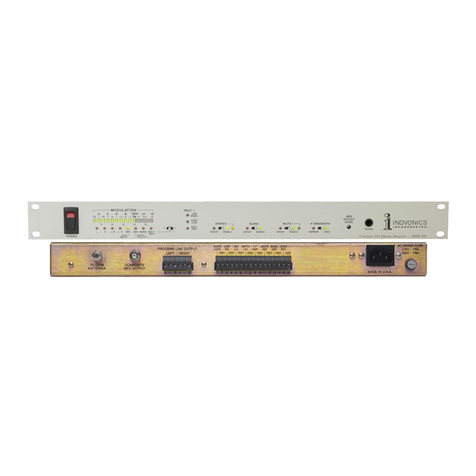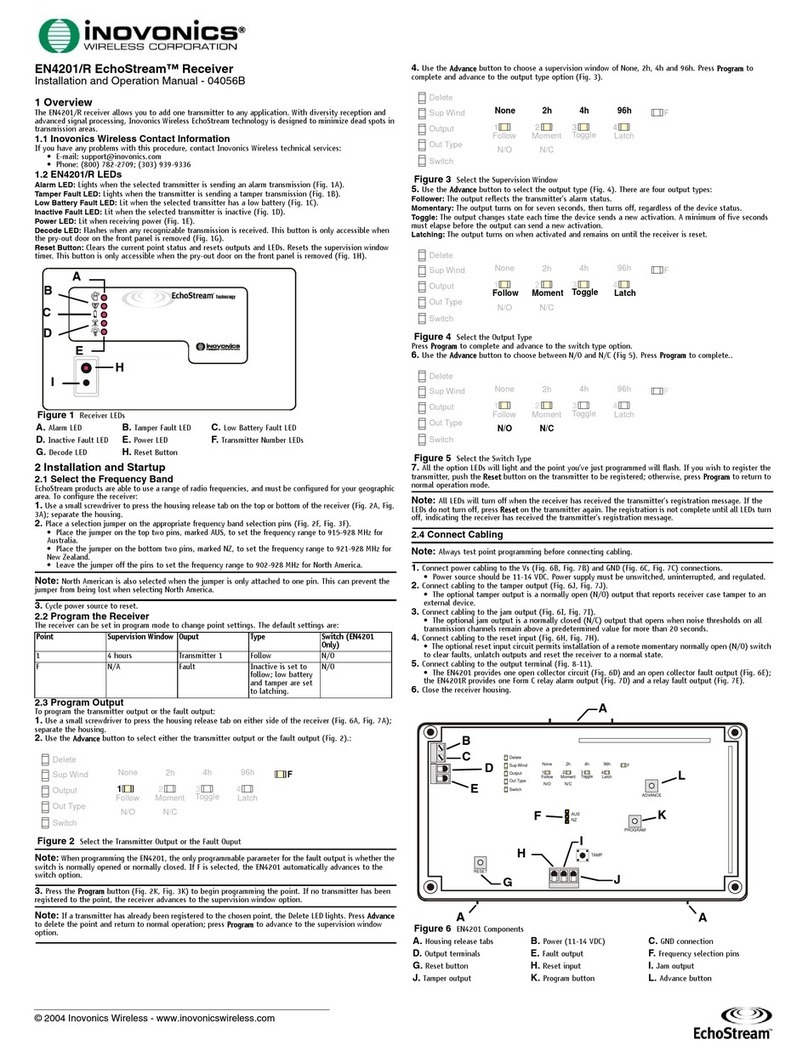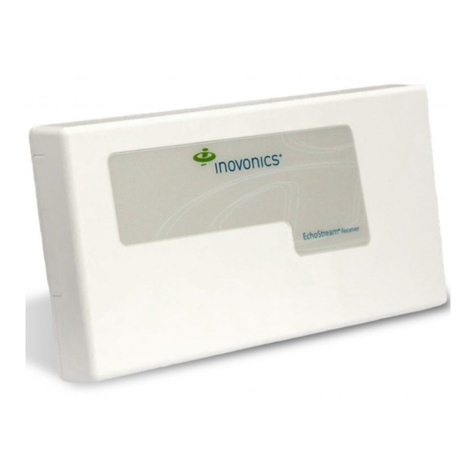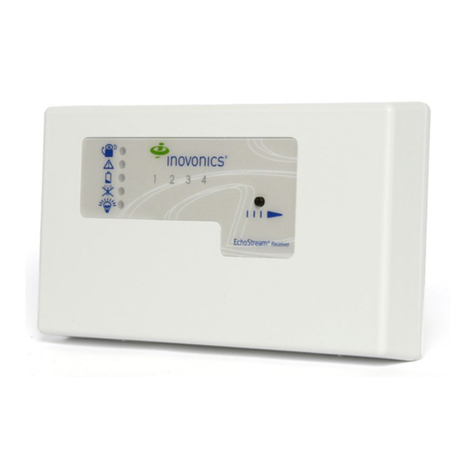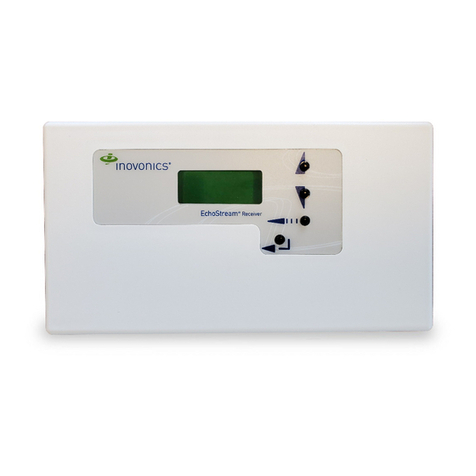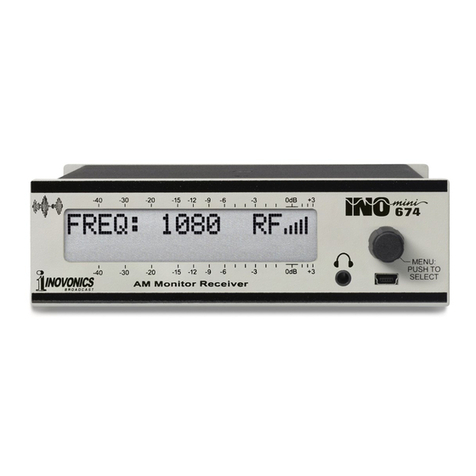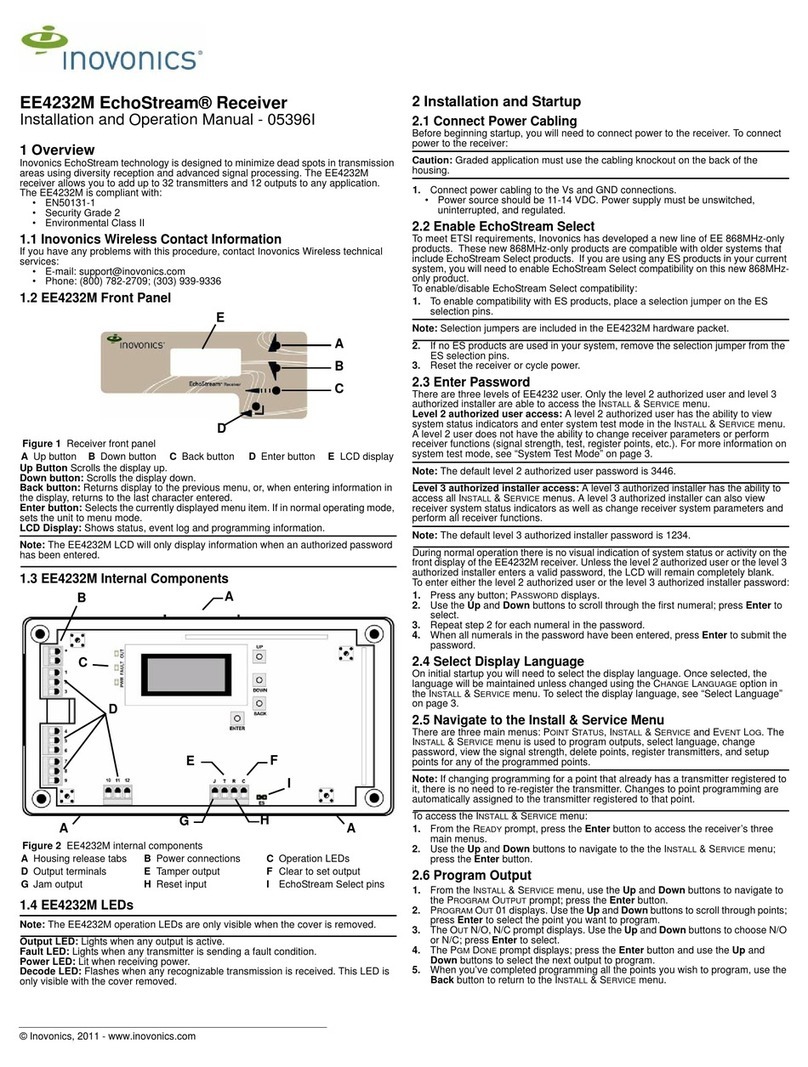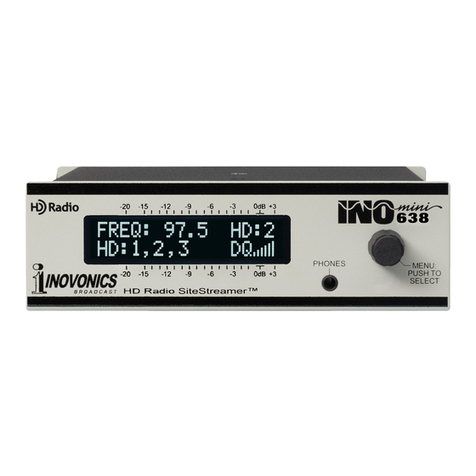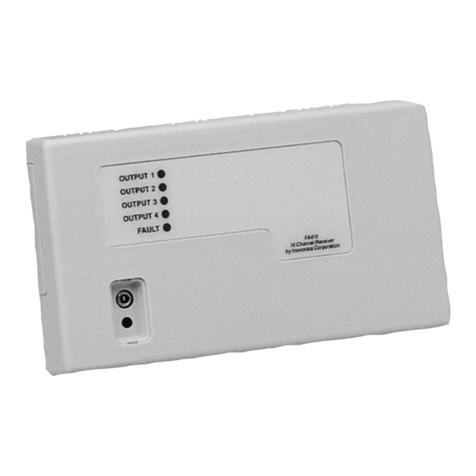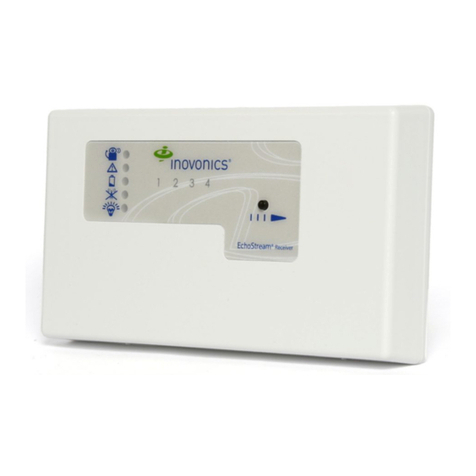
4.15.21 357-00023-02 Rev A © Inovonics, 2021 - www.inovonics.com 2
1.4 EN4000 Universal Serial Receiver Internal
Components
Figure 2 EN4000 serial receiver components
1.5 EN4000 Universal Serial Receiver Operation LEDs
The following LEDs are used to monitor serial receiver operation:
Transmit LED: Lit when the serial receiver is transmitting data to the
application controller.
Receive LED: Lit when the serial receiver is receiving data from the
application controller.
Decode LED: Lit when the serial receiver is decoding an RF transmission
from another Inovonics device.
2 Installation and Startup
2.1 Installation Notes
• These products are designed to be maintained by professional
security technicians.
• Products are tested for indoor use.
• All products should be manually tested weekly.
• Each manually operated holdup alarm initiating device shall be
installed so that it cannot be observed by the public and so that it can
be operated in a manner that will not be obvious to an attacking party.
• Each semi-automatic holdup alarm initiating device shall be installed
so that it is not noticeable to an attacking party during a holdup
attempt and is not noticeable to the public or an attacking party prior to
a holdup attempt.
2.2 Connect the Serial Cable
Caution: Long cable runs should not be adjacent to high current power
feeds. Keep cable lengths as short as possible to minimize cable
capacitance. Measure voltage supply at the universal serial receiver to
ensure power requirement is met for long cable runs.
1. Connect a serial cable to either the serial data port or the serial data
terminal. Cabling should meet the following specifications:
• Four-conductor 20AWG (or larger) stranded-tinned copper with PVC
insulation rated to 300 volts at 60°C (140°F). (Belden #8205, for
example.)
2. Route the cabling through either the bottom cabling knockout or the
side cabling knockout.
Note: All field-wiring circuits that derive energy from power sources
connected to a control unit shall be power limited. Route the cabling
through the side cabling or back housing knockout.
2.3 Mount the Universal Serial Receiver
Caution: Mount the EN4000 universal serial receiver in a location removed
from metal. Metal objects (duct work, wire mesh screens, boxes) will
reduce RF range.
Note: A best practice is to ensure the EN4000 universal serial receiver is
mounted in an easily accessible location for future maintenance.
1. Use the provided anchors and screws to mount the serial receiver in a
location accessible for future maintenance.
2. Close the serial receiver housing.
3. Perform a walk test, activating each transmitter assigned to the receiver
and ensuring a good signal.
Caution: Always test the system for operation upon completion of the
installation.
3 Troubleshooting
4 Specifications
Housing dimensions: 6.54" x 3.62" x 1.05" (166.1mm x 91.9mm x
26.67mm).
Weight: 145g (5.1oz).
Power requirement: 10-14 VDC at a minimum of 121mA.
Radio: Inovonics Wireless EchoStream .
Operating frequency: 902-928 MHz (USA) 915-925 MHz (AUS) 921-928
MHz (NZ).
Operating environment: 32-140°F (0-60°C) up to 90% relative humidity
(non-condensing).
Note: Inovonics supports recycling and reuse whenever possible. Please
recycle these parts using a certified electronics recycler.
Note: Contains FCC ID: HCQ3B6F; contains IC: 2309A-F.
AHousing release tab BSerial data port
CSerial data terminal DBottom cabling knockout
ESide cabling knockout FTransmit LED
GReceive LED HDecode LED
IReset button JHousing tamper switch and
spring
Problem Possible Solutions
Receiver won’t power up. • Verify your power and ground wires
are securely connected to VS and
GND on the power terminals.
• Meter incoming power to make sure
it is operating at 10-14 VDC, 55-
90mA.
• Keep cable lengths as short as
possible to minimize cable
capacitance. Measure voltage
supply at the receiver to ensure
power requirement is met for long
cable runs.
Messages from registered transmitters
are not being received.
• Verify receiver is getting enough
power.
• Bring the transmitter close to
receiver to verify it is in range and
can be heard by the receiver.
